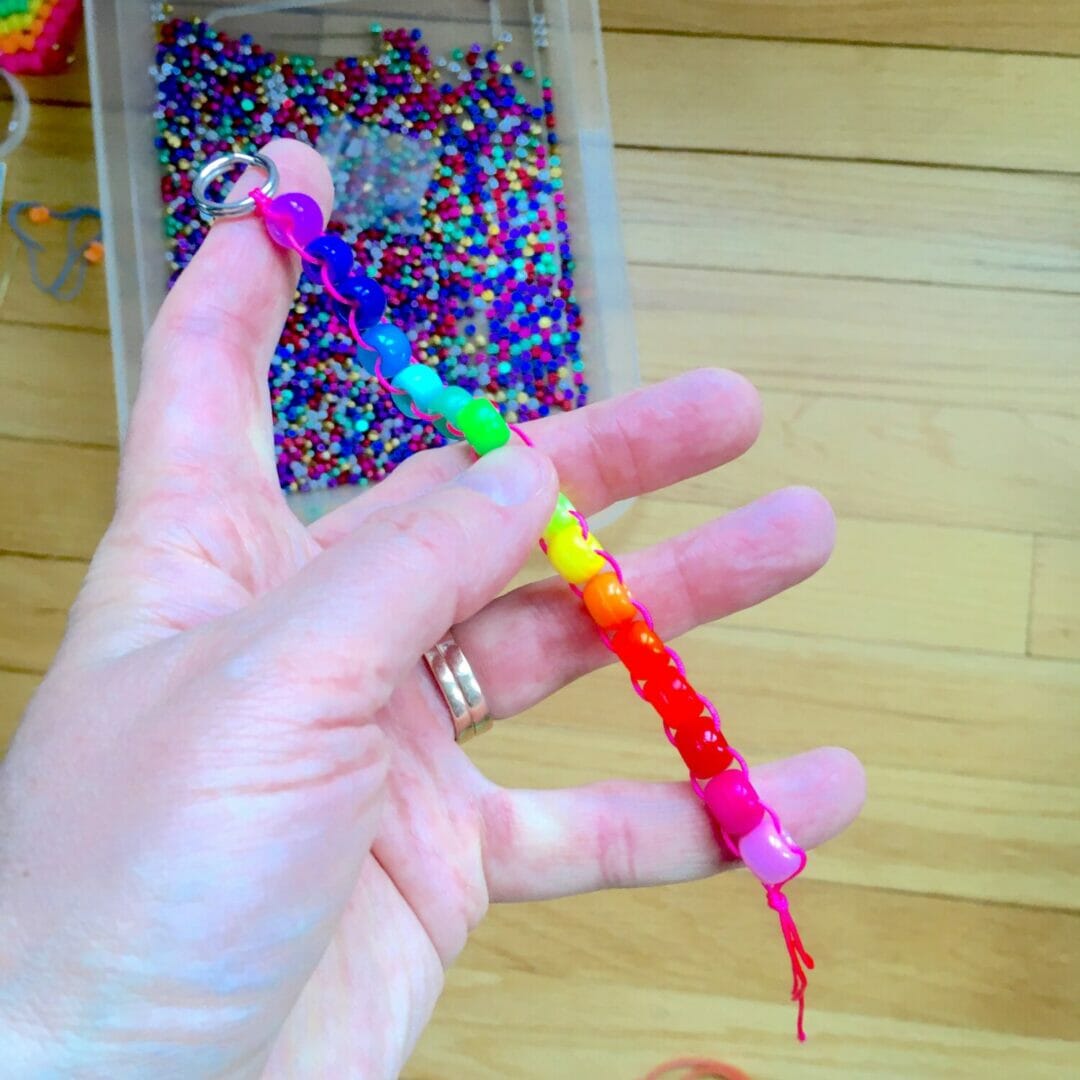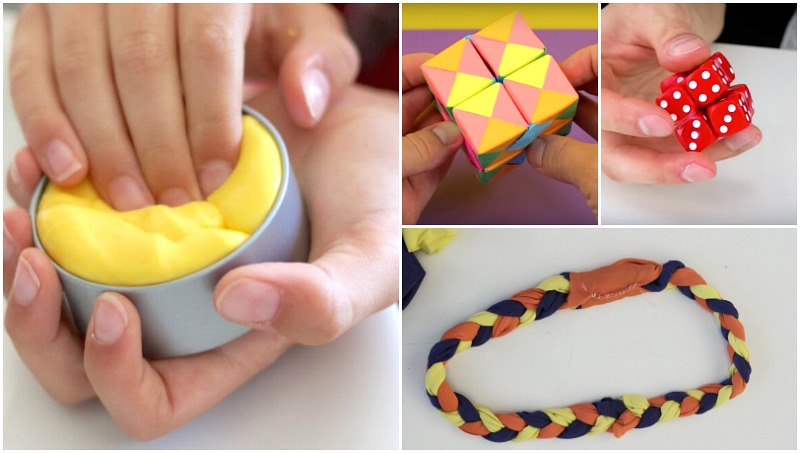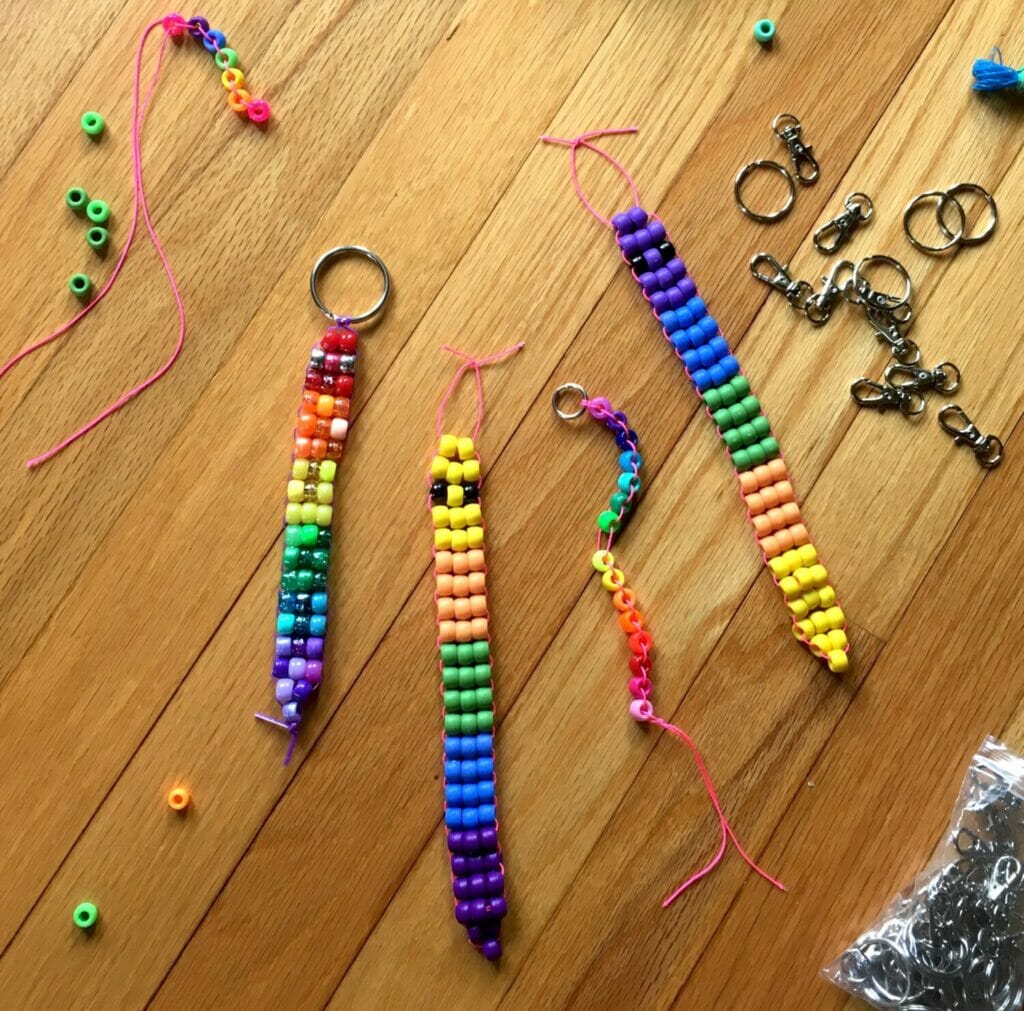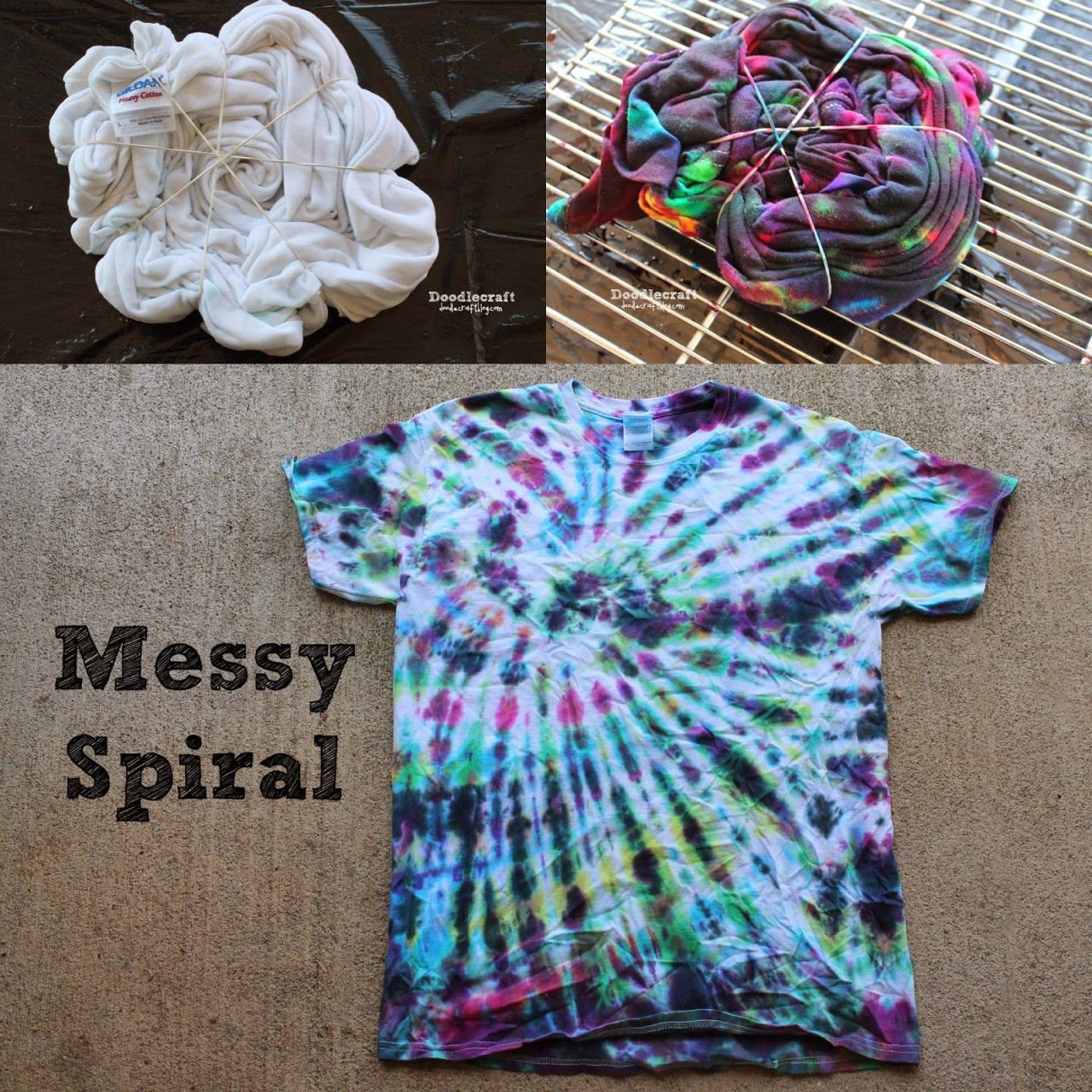DIY fidgets offer a unique and engaging way to channel nervous energy, promote focus, and relieve stress. From simple rubber band creations to intricate beadwork, these homemade fidgets allow for personalized expression and endless creative possibilities.
The world of fidget toys has exploded in recent years, with people seeking tactile stimulation and sensory input to combat anxiety and boredom. DIY fidgets tap into this trend, providing an affordable and customizable approach to finding the perfect fidget for individual needs.
Introduction to DIY Fidgets
Fidget toys are small objects designed to be manipulated with the hands, providing a tactile and sensory experience. These toys can help to relieve stress, boredom, and anxiety, as well as improve focus and concentration.
The popularity of DIY fidgets has surged in recent years, driven by factors such as the accessibility of crafting materials, the growing awareness of fidget toys’ benefits, and the rise of online communities dedicated to sharing DIY projects. People enjoy creating their own fidgets for various reasons, including personal expression, cost-effectiveness, and the satisfaction of crafting something unique.
History of Fidget Toys
Fidget toys have a long and fascinating history, dating back centuries. While the term “fidget toy” is relatively new, objects designed for tactile manipulation have been used for centuries across various cultures.
For example, ancient cultures used worry stones, small stones with smooth surfaces that were rubbed between the fingers for relaxation. These objects were believed to provide comfort and reduce anxiety.
In the 19th century, fidget spinners were invented in the United States. These simple toys, consisting of a central bearing surrounded by multiple arms, were initially marketed as educational tools for children.
The popularity of fidget toys has surged in recent years, driven by factors such as the growing awareness of their benefits and the rise of online communities dedicated to sharing DIY projects.
Materials for DIY Fidgets
The beauty of DIY fidgets lies in the flexibility of materials. You can use everyday objects and craft supplies to create unique fidget toys. This section explores common materials used for DIY fidgets and their properties, helping you choose the right materials for your project.
Common Materials
Materials commonly used for DIY fidgets are readily available online and in local stores.
- Rubber Bands: These are excellent for creating fidgets that involve stretching and snapping. Their elasticity provides a satisfying tactile experience.
- Beads: Available in various shapes, sizes, and materials (wood, plastic, glass), beads add visual appeal and tactile stimulation. They can be strung together or incorporated into other fidget designs.
- Paperclips: Paperclips offer a surprising versatility for fidgets. They can be bent, twisted, and joined to create simple yet engaging designs.
- Buttons: Buttons come in different sizes, shapes, and textures, providing tactile stimulation. They can be sewn onto fabric or used as components in other fidget designs.
- Cork: Cork is a natural material with a unique texture and resilience. It’s suitable for creating fidgets that offer a soft, tactile experience.
- Cardboard: Cardboard is a readily available and versatile material for creating fidgets. You can cut, fold, and decorate it to create intricate designs.
- Felt: Felt is a soft and pliable material that’s great for creating tactile fidgets. It can be cut, sewn, and glued to create various shapes and designs.
- Plastic Bottles: Plastic bottles can be repurposed to create fidgets. Cut, shape, and decorate them to create unique designs.
Sourcing Materials
- Online Retailers: Websites like Amazon, Etsy, and eBay offer a wide variety of materials for DIY fidgets. You can find specialized stores that cater to crafting and hobbyists.
- Local Craft Stores: Craft stores like Michaels, Hobby Lobby, and Joann Fabrics offer a wide selection of materials, including beads, buttons, felt, and more.
- Hardware Stores: Hardware stores are a great source for materials like rubber bands, paperclips, and cardboard.
- Thrift Stores: Thrift stores can be a treasure trove for finding unique and inexpensive materials for DIY fidgets. Look for buttons, beads, and other small objects.
Simple DIY Fidget Projects

Now that you have an understanding of the basics of fidgets and the materials you can use to make them, let’s dive into some simple DIY fidget projects. These projects are easy to create, require minimal materials, and can provide a variety of benefits.
DIY fidgets are a great way to channel your creativity and keep your hands busy. If you’re looking for a more intricate and detailed project, you might want to explore the world of needle craft. From embroidery to crochet, there are countless ways to create unique and personalized fidgets that combine both function and artistry.
Simple DIY Fidget Projects
Here are some simple DIY fidget projects you can try:
| Project | Materials | Steps | Benefits |
|---|---|---|---|
| Stress Ball |
|
|
|
| Bead Chain |
|
|
|
| Button Fidget |
|
|
|
| Popsicle Stick Fidget |
|
|
|
Customizing DIY Fidgets

The beauty of DIY fidgets lies in their flexibility. You can personalize them to suit your unique tastes and needs. With a little creativity, you can transform a basic fidget into a reflection of your personality, hobbies, or even a functional tool for specific tasks.
Adding Color and Texture
Adding color and texture is a simple yet effective way to customize your fidgets. You can paint them, use colored tape, or even wrap them in fabric. For texture, consider adding beads, buttons, or textured materials like sandpaper or felt. This can significantly enhance the tactile experience and make your fidget more enjoyable to use.
Incorporating Personal Interests
For those who want to go beyond basic customization, incorporating personal interests into the design is a fantastic way to create a truly unique fidget. Here are some examples:
- Music Lovers: Create a fidget with guitar picks, drumstick handles, or even a mini piano keyboard.
- Bookworms: Design a fidget with book-shaped components, pages that can be flipped, or even a tiny bookmark holder.
- Gamers: Make a fidget with controller buttons, joystick components, or even a mini arcade cabinet.
Adding Functionality
Adding functionality to your fidget can make it more than just a stress reliever. You can create fidgets that serve a specific purpose, such as:
- Pencil Grips: Incorporate fidget elements into a pencil grip for a more comfortable and engaging writing experience.
- Phone Stands: Design a fidget that can double as a phone stand for hands-free viewing.
- Keychains: Create a fidget that can be attached to your keychain for easy access and added entertainment.
Examples of Customized Fidgets
- The “Rainbow Spinner”: A fidget spinner with different colored rings, each representing a different emotion or mood.
- The “Zen Garden”: A fidget with a small sand tray and miniature rakes, allowing for a calming and mindful experience.
- The “Puzzle Cube”: A fidget cube with each side containing a different puzzle, challenging the user to solve them.
Safety Considerations for DIY Fidgets
Creating your own fidget toys can be a fun and rewarding experience, but it’s essential to prioritize safety throughout the process. DIY fidgets often involve using various materials, tools, and techniques that could pose potential hazards if not handled correctly.
Potential Safety Hazards
It’s crucial to be aware of the potential hazards associated with DIY fidgets. Some common risks include:
- Sharp objects: Using sharp tools like knives, scissors, or cutters can lead to cuts or punctures. Always handle these tools with care and ensure they are sharp enough for the task at hand to avoid excessive force.
- Hot glue guns: The hot glue used in many DIY fidget projects can cause burns if not handled properly. Always use a glue gun with a heat-resistant surface and wear heat-resistant gloves. Keep the glue gun away from children and flammable materials.
- Small parts: DIY fidgets often involve small parts that could be a choking hazard for young children. Ensure that any small parts are securely attached and that the fidget toy is not designed in a way that could easily break apart.
- Toxic materials: Some materials used in DIY fidgets, such as paints, adhesives, or certain plastics, can release harmful fumes or chemicals. Always work in a well-ventilated area and choose materials that are safe for use around children.
- Electrical components: If you are using electrical components like LEDs or batteries in your DIY fidgets, it’s essential to handle them with caution. Ensure the wiring is properly insulated and that the project is not overloaded. Always follow the manufacturer’s instructions and use the appropriate tools and safety precautions.
Safe Handling and Use of Materials
To minimize safety risks, follow these guidelines when working with materials for DIY fidgets:
- Read and understand the instructions: Always carefully read and understand the instructions for any materials you use. This includes information about safety precautions, proper handling techniques, and potential hazards.
- Use appropriate tools: Use tools that are designed for the specific task at hand and are in good working condition. Avoid using tools that are damaged or worn out.
- Wear appropriate safety gear: Wear safety goggles to protect your eyes from flying debris, gloves to protect your hands from cuts or burns, and a mask to prevent inhaling dust or fumes.
- Work in a well-ventilated area: When using materials that release fumes or chemicals, work in a well-ventilated area to prevent buildup of harmful gases.
- Store materials properly: Store materials in a safe and secure location, out of reach of children and pets. This includes tools, adhesives, paints, and other materials that could pose a hazard.
- Dispose of materials properly: Dispose of materials according to local regulations. Some materials, such as batteries, require special disposal methods.
Adult Supervision for Children, Diy fidgets
It’s crucial to emphasize the importance of adult supervision when children are working with DIY fidgets. Children may not be fully aware of potential hazards and may not have the skills to handle tools and materials safely. Adults should supervise children at all times and ensure they follow safety guidelines.
DIY Fidgets for Specific Needs
Fidget toys can be beneficial for individuals with various needs, offering a discreet and engaging way to manage anxiety, focus, and sensory stimulation. By customizing your own fidgets, you can tailor them to your specific needs and preferences.
Fidgets for Different Needs
Fidget toys can be helpful for managing a variety of needs. Here’s a table outlining some common needs and suitable DIY fidget types:
| Need | Fidget Type | s | Benefits |
|---|---|---|---|
| Anxiety | Stress Ball | – Fill a balloon with flour or cornstarch. – Add a few drops of essential oil for a calming scent. – Tie the balloon tightly. |
Squeezing the stress ball can help release tension and reduce anxiety. The calming scent can also promote relaxation. |
| ADHD | Tactile Spinner | – Cut a circular piece of cardboard. – Attach a button or bead to the center of the cardboard. – Glue or tape multiple rubber bands around the cardboard, attaching them to the button or bead. |
The tactile stimulation of the spinning rubber bands can help improve focus and concentration for individuals with ADHD. |
| Stress Relief | Pop It | – Cut out a bubble shape from a silicone sheet. – Repeat the process to create multiple bubbles. – Connect the bubbles together with a silicone sealant. |
The repetitive popping action can provide a satisfying sensory experience and help relieve stress. |
| Sensory Stimulation | Fidget Cube | – Cut a cube shape from a piece of foam board. – Add various textures and materials to the cube’s sides, such as buttons, switches, and textured fabric. |
The different textures and features on the fidget cube can provide a range of sensory stimulation, which can be calming and engaging for individuals with sensory processing needs. |
Sharing DIY Fidget Ideas

Sharing your DIY fidget creations and tutorials with others is a great way to inspire creativity, foster a sense of community, and learn from others. It also helps to spread awareness about the benefits of fidgeting and how it can be used to manage stress, anxiety, and boredom.
Online Platforms for Sharing DIY Fidget Ideas
Online platforms provide a convenient and accessible way to connect with others who are passionate about DIY fidgets. These platforms allow you to share your projects, tutorials, and ideas, as well as learn from others in the community.
- Social Media: Platforms like Instagram, TikTok, Pinterest, and YouTube are popular choices for sharing DIY fidget content. You can create accounts dedicated to your fidget creations and use relevant hashtags to reach a wider audience.
- Forums and Communities: Online forums and communities specifically focused on fidgets provide a space for sharing ideas, asking questions, and getting feedback from other enthusiasts. Some popular examples include Reddit’s r/FidgetToys and various Facebook groups dedicated to DIY fidgets.
- Blogs and Websites: Creating your own blog or website dedicated to DIY fidgets allows you to share detailed tutorials, showcase your projects, and build a dedicated following.
End of Discussion
The DIY fidget movement encourages creativity, resourcefulness, and self-expression. Whether you’re seeking stress relief, a distraction from boredom, or a unique and personalized sensory experience, crafting your own fidgets can be a rewarding and fulfilling activity. So, gather your materials, unleash your creativity, and explore the endless possibilities of DIY fidgets.

